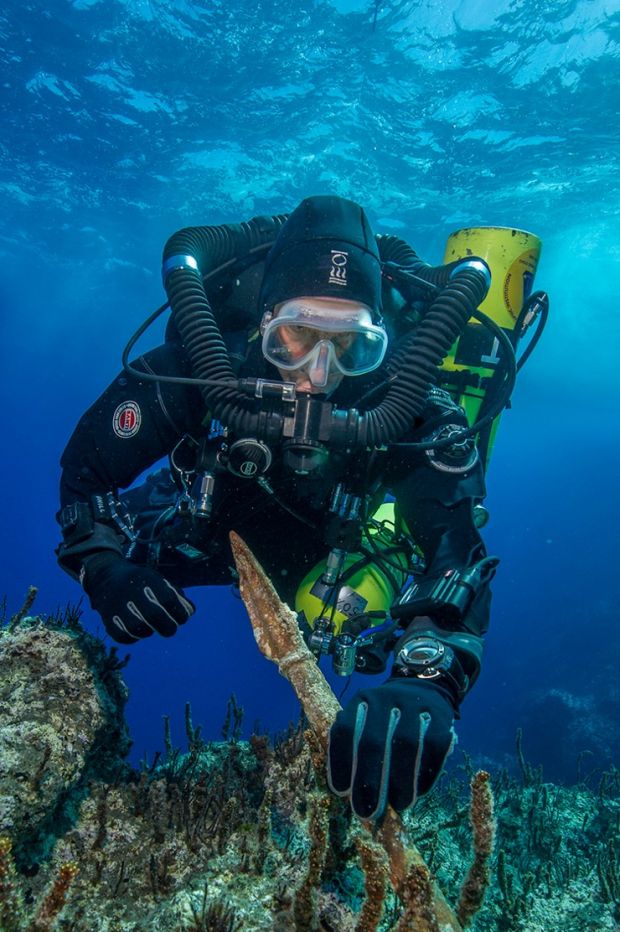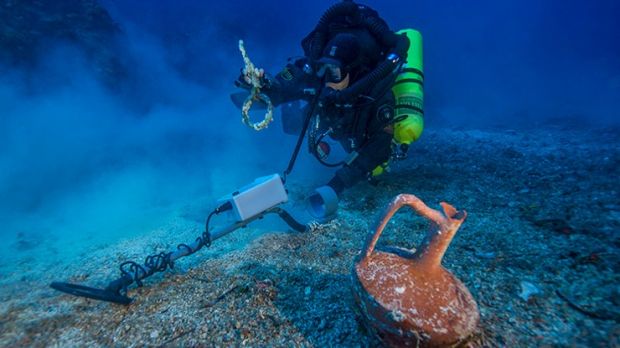Earlier this year, on September 15, underwater archaeologists and divers got busy exploring a shipwreck resting on the seafloor in the waters off the coast of the island of Antikythera in Greece.
The excavation season lasted until October 7, and a couple of days later, the shipwreck explorers, among which Brendan Foley with the Woods Hole Oceanographic Institution, announced their findings to the world.
In a nutshell, it appears that, while examining the remains of this ship, estimated to be well over 2,000 years old, the underwater archaeologists and fellow divers recovered several stunning artifacts such as tableware and lead anchors.
What's more, they claim to have discovered a bronze spear that is about 2 meters (6.5) long. Given its size and impressive weight, the researchers who found it argue that it most likely used to be part and parcel of a warrior statue.
Thus, they say that this bronze spear is simply too big and too heavy for anyone to have been able to use it during a fight. For the time being, the whereabouts of the statue that this artifact belong to remain unknown.
The Titanic of the ancient world
As mentioned, this ship resting not far from Greece's Antikythera island is believed to have sunk over 2,000 years ago. It was first discovered by a group of sponge divers back in 1900. These men came across it quite by chance, after being blown off course by a storm.
The sponge divers took their time exploring the shipwreck and managed to recover jewelry, several bronze and marble statues, luxury glassware, and even furniture. They stopped diving in the area after one of them died and two others were paralyzed in an accident.
This year, researchers used cameras fitted onto an autonomous underwater vehicle to create a three-dimensional map of the site of the shipwreck and to pin down the bits and pieces of the ancient Greek vessel that scattered all across the seafloor.
It was thus discovered that the vessel measured about 50 meters (164 feet) in length when in one piece, and that its remains now cover about 300 square meters (3,230 square feet) of the seafloor. Evidence at hand indicates that much of the ship's cargo is still hidden under sediment deposits.
Judging by the artifacts recovered by the sponge divers decades ago and the ones found by underwater archaeologists this year, specialists believe that the vessel was a luxury one carrying treasures from the coast of Asia Minor west to Rome. It most likely sank during a storm that smashed it against some cliffs.
“The evidence shows this is the largest ancient shipwreck ever discovered,” researcher Brendan Foley told the press in an interview. “It's the Titanic of the ancient world,” the Woods Hole Oceanographic Institution specialist went on to say.
Trouble exploring the shipwreck
The remains of this ancient luxury ship sit at a depth of about 55 meters (180 feet). Hence, divers and researchers cannot use regular scuba equipment to explore it. On the contrary, they must rely on so-called re-breather technology.
What this means is that, when swimming around the remains of the vessel, they carry special equipment that pulls the carbon dioxide from the air they exhale and recirculates oxygen. Thanks to this equipment, they can spend up to three hours examining the site of the wreckage.
The good news is that, despite the fact that browsing this one shipwreck off the coast of Greece's Antikythera isn't exactly easy-peasy, researchers have no intention to quit trying to find more artifacts. On the contrary, they plan to return to this site as soon as possible and get busy unraveling more of its secrets.

 14 DAY TRIAL //
14 DAY TRIAL // 

